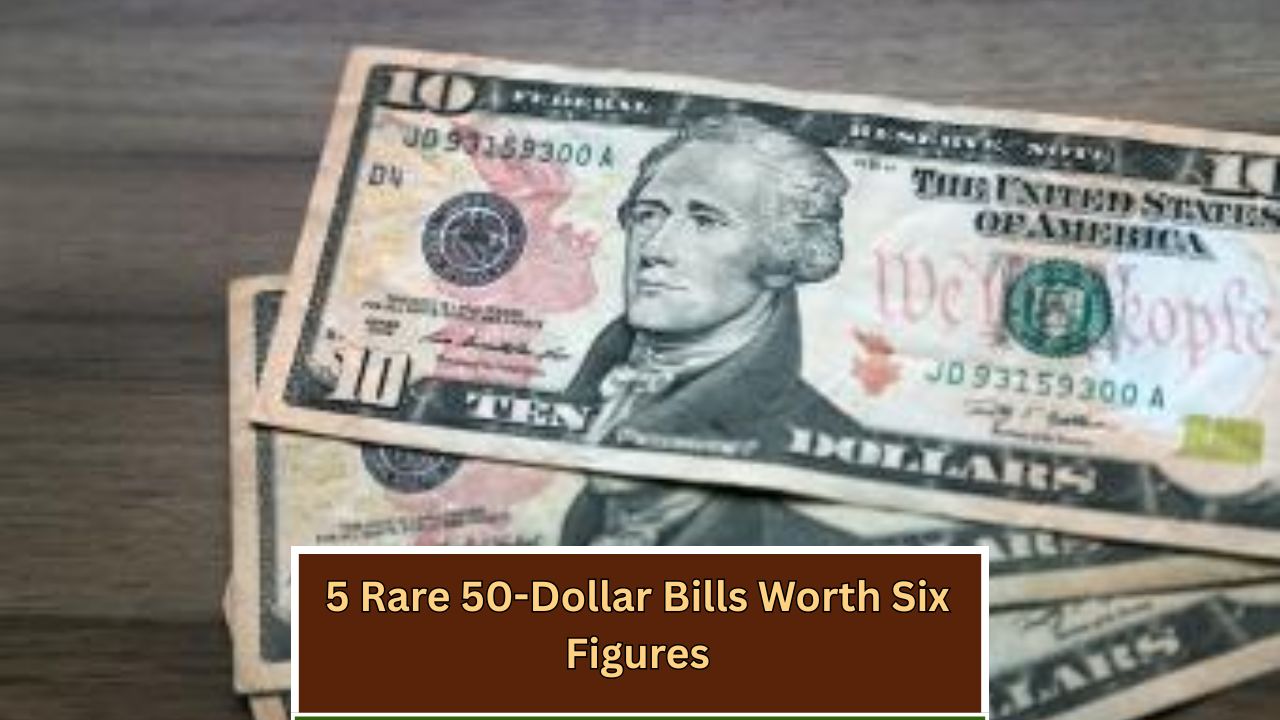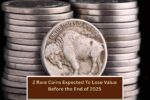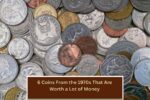When that $50 bill is a rare find worth thousands! Before you hand it over for dinner, take a closer look—it might be a hidden gem.
50-Dollar Bill Value Chart
Keep this handy value chart nearby to quickly check if your $50 bill could be worth more. These examples come from US Currency Auctions and highlight some of the oldest and most valuable bills out there:
| Year | Type | Size | Seal Color | Circulated Value | Uncirculated Value |
|---|---|---|---|---|---|
| 1861–1876 | Interest Bearing Note | Large | Red | Too rare to estimate | N/A |
| 1863 | United States Note | Large | Red | $8,000 – $16,000 | N/A |
| 1869 | United States Note | Large | Red | $13,000 – $25,000 | N/A |
| 1882 | Gold Certificate | Large | Brown | $8,000 – $20,000 | N/A |
| 1891 | Treasury Note | Large | Red | $35,000 – $50,000 | N/A |
| 1913 | Gold Certificate | Large | Red | $700 – $1,300 | $2,500 and up |
| 1934 | Federal Reserve Note | Small | Green | $55 – $120 | $150 and up |
| 1969 | Federal Reserve Note | Small | Green | $60 – $75 | $90 and up |
| 1977 | Federal Reserve Note | Small | Green | $60 – $85 | $90 and up |
| 1996 | Federal Reserve Note | Small | Green | $50 – $65 | $70 and up |
| 2013 | Federal Reserve Note | Small | Green | $50 | $55 and up |
The oldest 50-dollar bills, called “large notes,” were much bigger than today’s bills—about 7.42 by 3.1 inches. Because of their age and size, they’re often worth a lot more.
How Rare Are $50 Bills?
Even though you don’t see them every day, most $50 bills aren’t rare. In 2022, the Federal Reserve reported 2.5 billion $50 bills in circulation. While that’s far fewer than $1s or $100s, it’s still a hefty supply.
So, what makes a $50 rare? It has to stand out—whether it’s old, has a printing error, or features a unique serial number.
how Much Is a $50 Bill Worth?
Every $50 bill is worth at least its face value. But some are worth way more. If yours is a large note, it could fetch at least $150—and potentially thousands.
Here’s what to look for:
- Old bills – Pre-1928 or large-size notes are especially valuable.
- Excellent condition – Less wear means more value. Uncirculated bills are ideal.
- Printing errors – Mistakes can increase worth significantly.
- Handwritten signatures – Some older bills were hand-signed and carry added value.
- Rare serial numbers – Low numbers, patterns, or other unusual features make a difference.
5 Rare and Valuable $50 Bills to Watch For
If your $50 looks out of the ordinary, give it a good look. Some rare examples have sold for hundreds of thousands of dollars.
$50 1861 Interest-Bearing Note
The U.S. began printing paper money in 1861, so notes from this year are extremely rare. Only one Fr. 202a $50 note is known to exist. It sold in 2005 for $368,000.
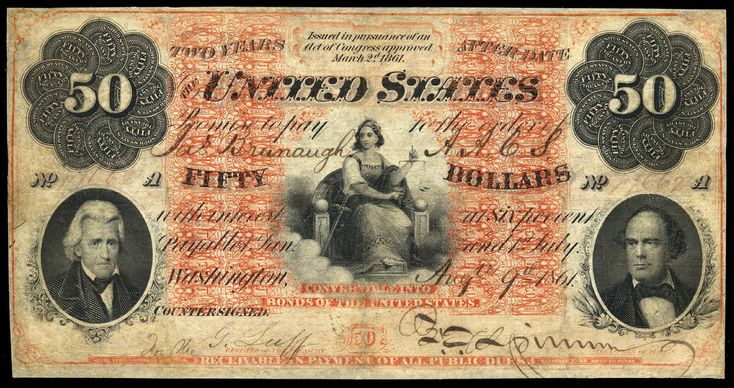
$50 1863 Legal Tender
A very early piece of U.S. paper currency, the 1863 Fr. 150 note is highly sought after. With only nine known examples, one in excellent condition fetched $299,000 in 2008.
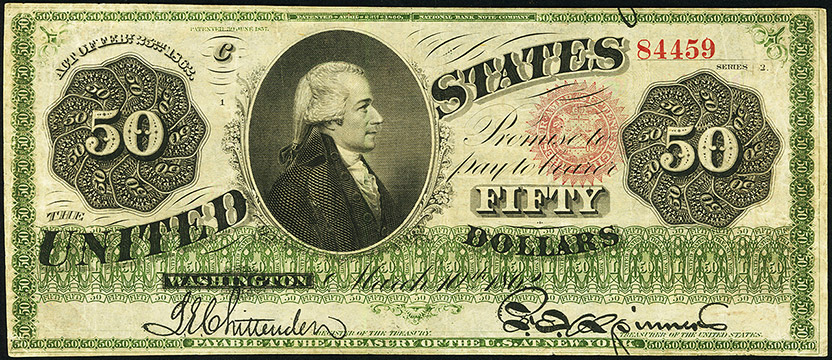
$50 1891 Treasury Note
Just 25 of these Fr. 376 Treasury Notes are known. One with the serial number B2, in perfect condition, sold for $299,000 in 2005.
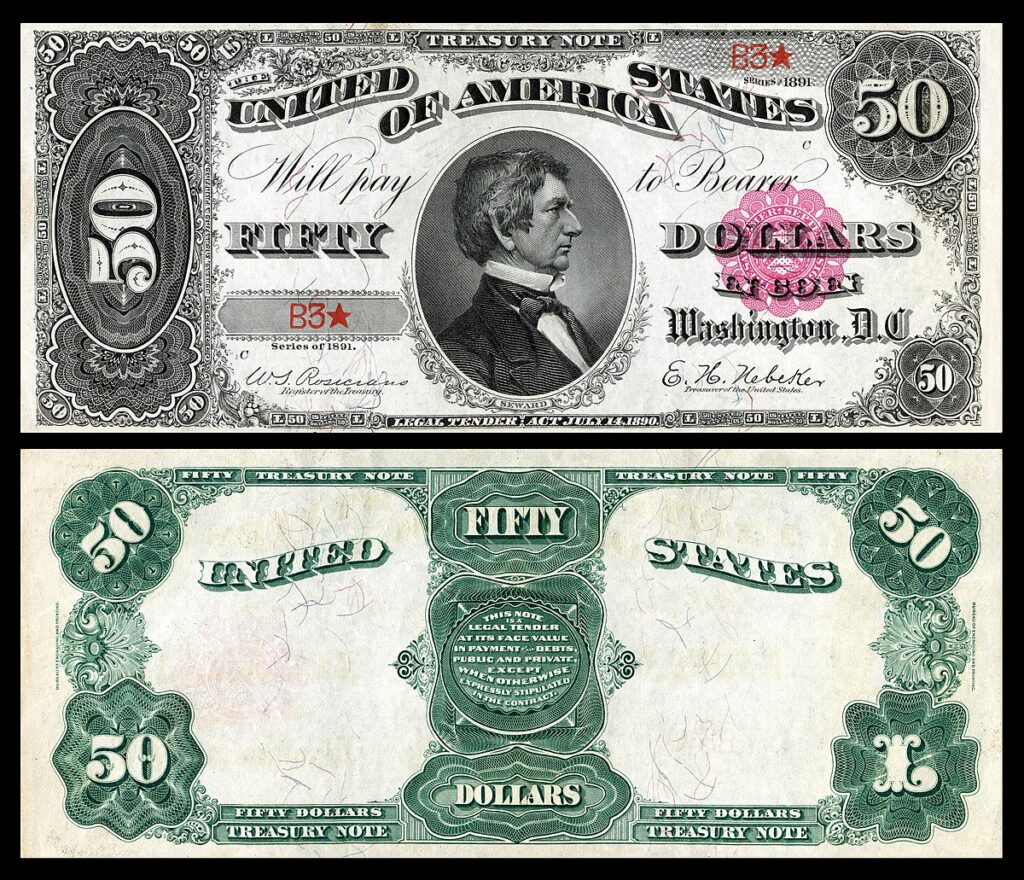
$50 1882 Gold Certificate
Only four Fr. 1191 examples exist. One in pristine condition sold for $299,000 in 2006.
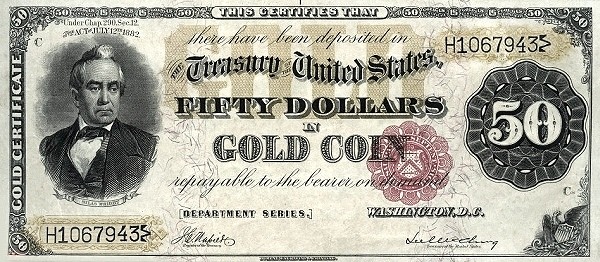
$50 1869 Legal Tender
This Fr. 151 legal tender bill is incredibly rare, especially in uncirculated form. One flawless example brought in $223,250 in 2016.
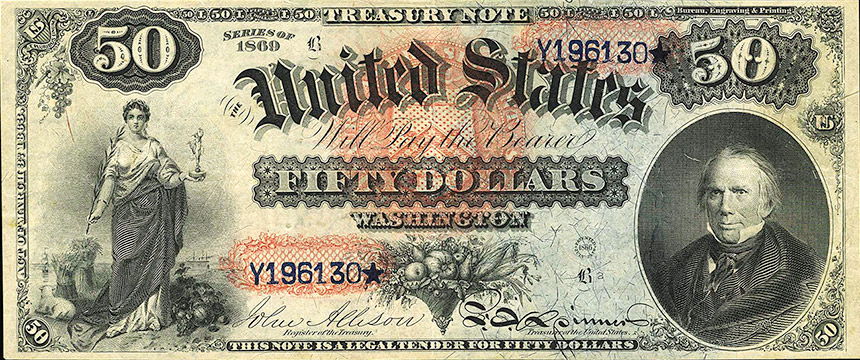
Which $50 Serial Numbers Are Valuable?
Serial numbers can make a big difference in value. Use a magnifier and check for:
- Star notes – A star means the bill replaced another during production and may be worth more.
- Palindromes – Serial numbers that read the same forwards and backwards are hot among collectors.
- Low serials – Numbers like 00000001 are considered rare and valuable.
- Repeating patterns – Sequences like 77777777 or 12121212 can increase a bill’s appeal.
Spot a Hidden Treasure in Your Wallet
Take a moment before handing over a $50 bill—especially if it looks unusual. That quick glance might uncover a rare note worth hundreds or even thousands more than its face value.
This article has been carefully fact-checked by our editorial team to ensure accuracy and eliminate any misleading information. We are committed to maintaining the highest standards of integrity in our content.

Outside of work, he enjoys playing chess, following cricket, and writing short stories. His commitment to integrity and in-depth analysis strengthens OTE News’ mission of providing trustworthy journalism.

